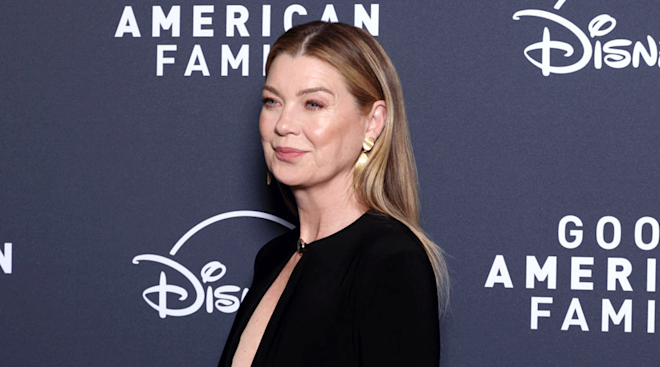I Was an Accidental SAHM—and I’m Done Feeling Guilty About It
While 12 weeks pregnant with my now-5-year-old daughter, I unexpectedly began a lengthy and bumpy career transition. After an unfortunate incident involving me being pregnant and my employer being an out-of-control misogynist, I decided I was all the way done. Done with my job, done with my field. It was the last straw in a pile of too many. But I didn’t know what to do next—a conundrum exacerbated by my fear of failure and yet-to-be-diagnosed ADHD. Add a new baby and a global pandemic to the mix, and I was a veritable recipe for an accidental stay-at-home mom.
Crash-landing into my new SAHM role was shocking, to say the least. I became depressed. Unamused. None of this was going according to my plan, which was that I was going to strong-working-mom my way through motherhood (which no doubt would’ve landed me in a completely different existential crisis). But nonetheless, I had a plan, and this wasn’t it.
On top of feeling like a square peg in a round hole, I was also surprised to find myself filled with shame about my new job title. I felt like I was letting everyone down: myself, my working-mom friends and, most distressingly, my daughter. I didn’t realize then that my out-of-date, “feminist” standards were the problem.
Through lots of therapy and unpacking of my unconscious beliefs during the past five years, I’ve learned that the shame I felt about being a stay-at-home-mom came from leaning into “lean in” feminism a little too hard.
For those who need a recap, in her 2013 book Lean In, former Meta COO Sheryl Sandberg encouraged women to #girlboss their way to the tippy top of the career ladder by sheer will. She started a movement—but as scores of her disciples found out the hard way, the movement set an impossible standard for women. It unfairly placed the onus squarely on women to improve their career and life circumstances despite an inhospitable work landscape.
The “lean in” movement was criticized from the beginning, but the words inside those pages stubbornly seeped into the fabric of American womanhood. I’ve never even read the book, but apparently ended up centering my entire sense of motherly worth around its message.
In her famous 2012 article “Why Women Still Can’t Have It All,” Anne-Marie Slaughter wrote, “It is time for women in leadership positions to recognize that although we are still blazing trails and breaking ceilings, many of us are also reinforcing a falsehood: that ‘having it all’ is, more than anything, a function of personal determination.” In other words, It’s time we stop gaslighting the women and girls of America. Unfortunately, her words are as relevant today as they were over a decade ago.
Thanks to my long-overdue awakening, I now have a different understanding of what it means to be a feminist role model, and it starts with radical acceptance. The pressure on women to perfectly “Boss Babe” while “supermomming” in a country that doesn’t do its part to support us is too great, and I’m starting to believe the most feminist message I can send my daughter is the truth: that the cards are still stacked against us, and we’re all just doing the best we can.
It’s like American moms are unwilling participants in a lifelong experiment testing what happens when we’re given an impossible set of tasks and only a fraction of the tools we need to complete them. I no longer believe that winning means hitting the most targets against all the odds. I believe it means taking care of ourselves and seeing clearly that we’re being set up to fail.
Until there’s paid parental leave, subsidized early childcare, a school schedule that aligns with work schedules and pay equity, American moms can’t win. We can’t “have it all” in work and family life in a society that doesn’t embrace our whole selves, see our differences and honor our physical and emotional needs.
Staying silent about this inequity while muscling our way through a patriarchal work environment sets our daughters up for shock and disappointment. Painting them the whole picture is, of course, a delicate dance—I would never want to inadvertently send the message to my daughter that her existence itself has burdened me. But I do think part of my job is giving her age-appropriate context about the world she’s seeing and inheriting.
As American moms, we’re all struggling, and we all have some level of mom guilt about our circumstances. It’s my hope that we can stop mom-shaming and sizing up our lives against unattainable standards. It’s time we struggle together. We’re all on the same side of the table. The patriarchy is still winning, and that’s not on us.
In the years it’s taken for me to dive into a new career path, I’ve had a lot to consider. Unlike the first time I chose a career, this time I’ve had a complete understanding of what it means to be a working mom in America. To what extent should I prioritize a flexible schedule? How would we manage childcare if I chose something with less flexibility? Would my daughter benefit more from me being more present in her early childhood or from watching me chase my dreams, thus giving her permission to do the same? These are all filters through which men don’t put their career aspirations.
In the end, I decided that chasing my dreams would always be worth it, and I’m pursuing (you guessed it) writing. After five years as an accidental SAHM, I’m stepping back into the career world—this time with a new sense of bravery, clarity and humility. To all the moms who never left and to all who never plan to return, I stand with you. May we all find peace in whatever role we’re in and have grace for each other, knowing we’re all just doing our best to get through a Tuesday.
Hopefully, with the help of allies, we can move the needle enough so that our daughters’—and our sons’—futures will look brighter: freer, more inclusive, more empowered. I believe this is a major fight of our generation. If only we weren’t already so tired.
Plus, more from The Bump:
Navigate forward to interact with the calendar and select a date. Press the question mark key to get the keyboard shortcuts for changing dates.




















































